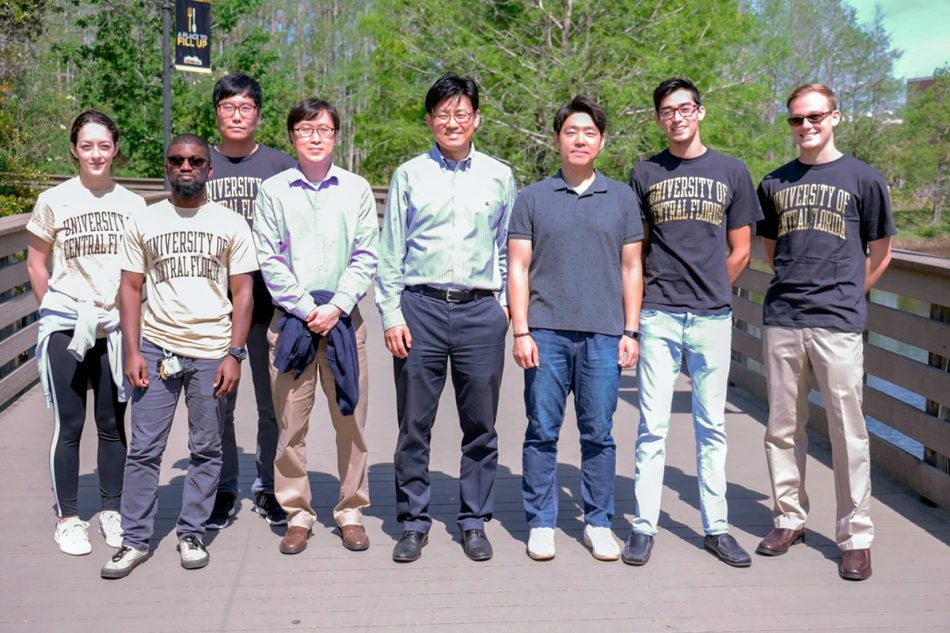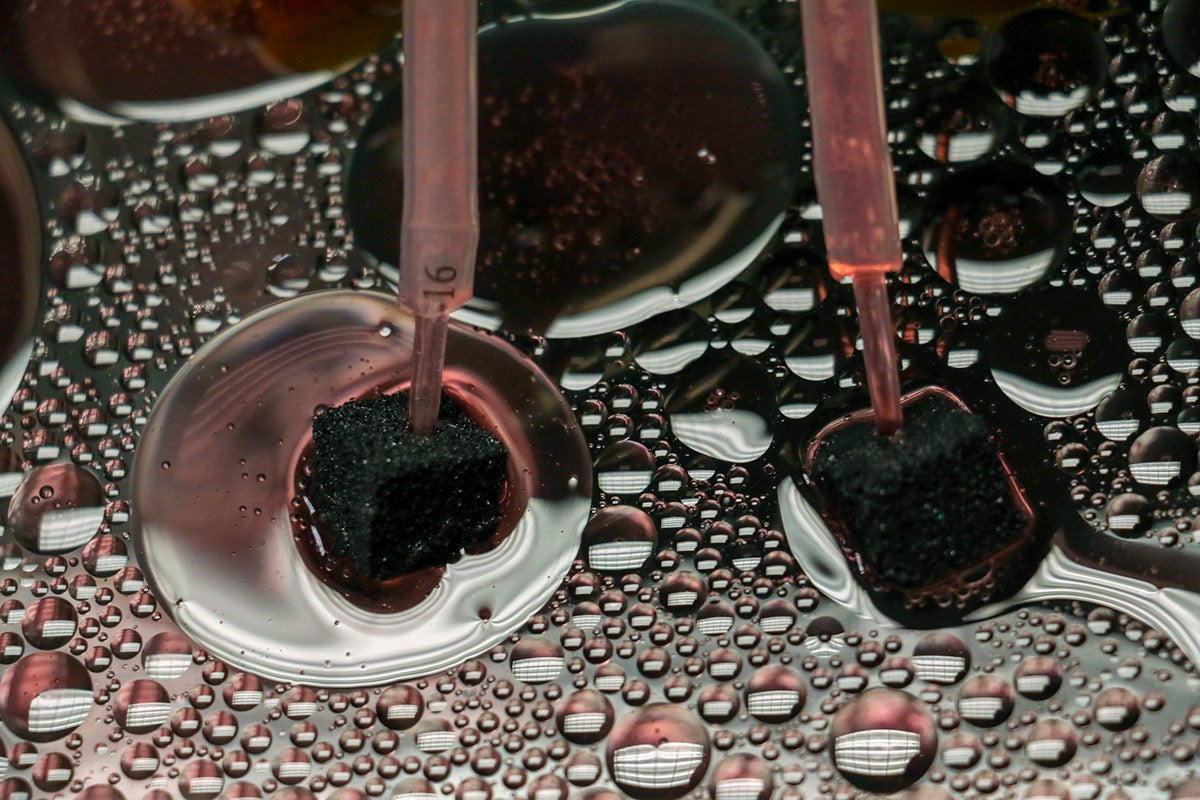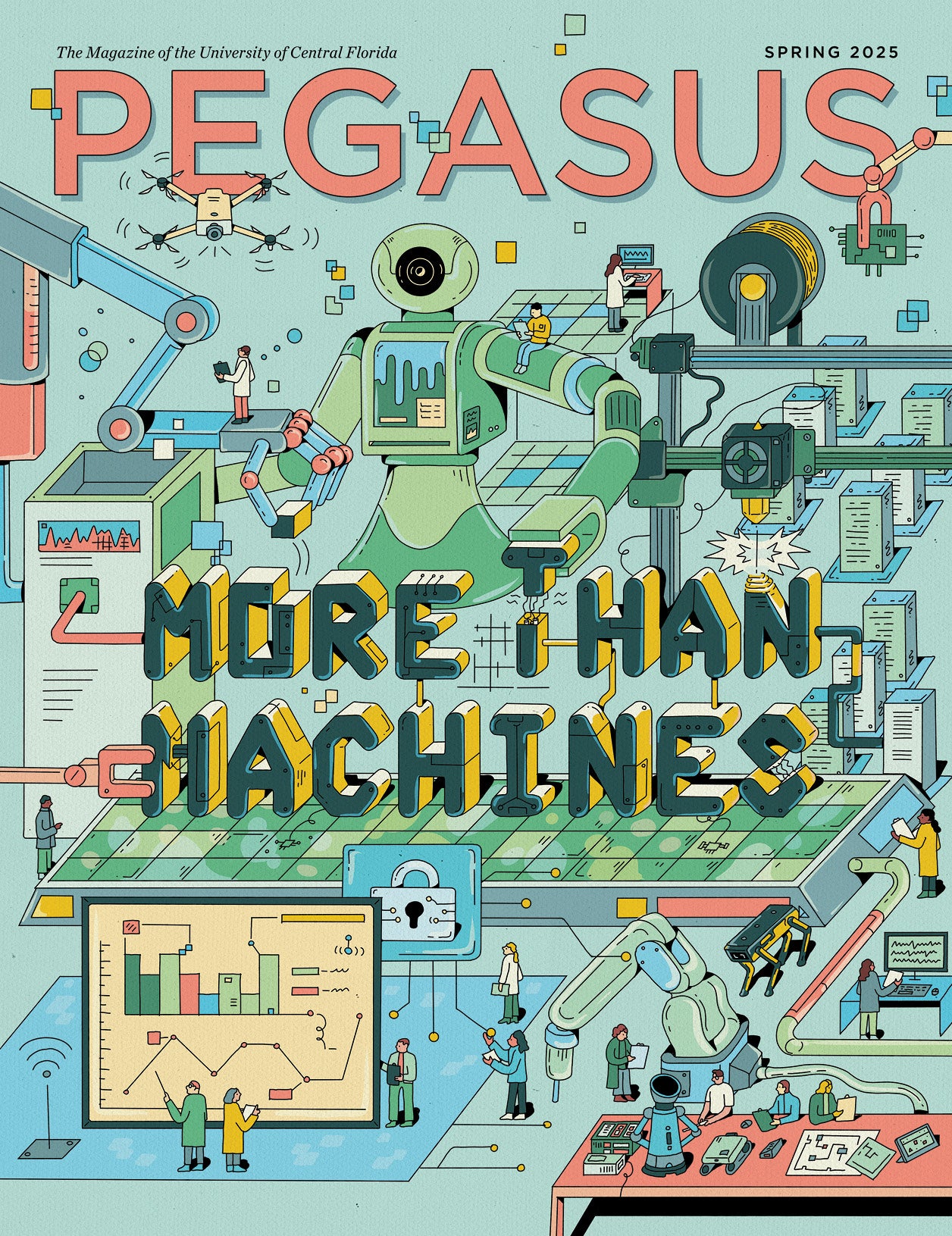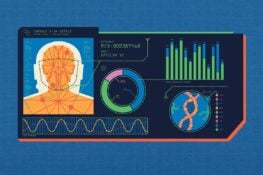A group of University of Central Florida students has developed super high-tech sponges to clean up ocean oil spills. The sponges soak up oil but repel water, leaving behind no toxic byproduct.
It’s a green solution with a bonus – the oil could be recycled for future use.
The students will showcase their invention at the National Sustainable Design Expo, which is part of the USA Science & Engineering Festival in Washington, D.C., on April 7-8.
The U.S. Environmental Protection Agency awarded UCF one of only 31 national student-design competition awards for Sustainability Focusing on People, Prosperity and the Planet (P3). Students submit their designs, and those selected get $15,000 to prepare an exhibit to showcase their work. Only the best student designs from around the nation are showcased. While there, the teams also compete for an additional $75,000, which would allow them to further develop their inventions.
“This technology will lead to cleaner surface water and can be used for oil-spill remediation,” says Professor Woo Hyoung Lee, who is a principal investigator of the project and mentored the students.
“This technology will lead to cleaner surface water and can be used for oil-spill remediation,” said Professor Woo Hyoung Lee, who is a principal investigator of the project and mentored the students. “The project has given our interdisciplinary team of students an excellent experience in how to work together to solve problems putting to use their areas of expertise and learning from each other. It’s how the real world works.”
The students agree and said they learned as much about working together and managing a project as they did putting their academic and technical skills to use.
The tech harks back to the idea of keeping solutions simple.
Currently, chemicals and dispersants are used to remove oil during a spill, but these also create byproduct pollution. Instead, the UCF superhydrophobic MoS2-coated sponges take in oil while simultaneously rejecting water. They leave no residue behind. The challenge is that MoS2 sponges require complex fabrication. The team of students used microscopy and spectroscopy to determine the best way to make the sponge. The conclusion was that MoS2 should be layered along the porous areas of the sponges. The dip-dry method resulted in durability and reduced cost. The sponges could be turned into mats that would be deployed again and again after they are cleaned, keeping costs low.

“My role on the team was to bring a biotechnological perspective to the project, which focuses on the cellular and biomolecular process of what we are trying to achieve, and expand on those processes in application to commercial production,” said Dianne Mercado, who is pursuing a bachelor’s degree in biotechnology. “While biotechnology is my specialty, one of the best aspects of being part of this project is having other students who come from a variety of fields work together to create something truly interdisciplinary.”
“I had extra motivation in the project because of the Deepwater Horizon oil spill of 2010, which occurred near Mexico, where my family is from,” says student Hernan Sabua.
The project appears to be exactly the kind of result the EPA program is looking to inspire. P3’s two-phased research-grants program challenges students to research, develop, and design innovative projects that address real-world challenges involving all areas of environmental protection and public health, according to the competition website. The goal of the competition is to foster progress toward environmental awareness by achieving the goals of improved quality of life for all people, economic prosperity, and protection of the planet.
It was the competition’s mission that attracted Hernan Sabua, a civil engineering major who was the student team leader.
“Ever since I was little, I wanted to make a difference in the environmental sustainable aspects of engineering,” Hernan said. “I had extra motivation in the project because of the Deepwater Horizon oil spill of 2010, which occurred near Mexico, where my family is from.”
The spill dumped more than 200 million gallons of crude oil into the Gulf of Mexico during 87 days, making it the biggest oil spill in U.S. history.
“I like to be involved in EPA’s activities for improving the quality of our life and protecting our planet,” Lee says.
Other members of the team include Kelsey Rodriguez from environmental engineering, Conner Thompson from biomedical sciences, Dwight Davis from mechanical engineering, post-doctoral associate Taejun Ko from the NanoScience Technology Center. Professor Yeonwoong Jung from the NanoScience Technology Center and Jae-Hoon Hwang, a post-doctoral scholar from environmental engineering, round out the team as co-principal investigators. Hwang is a recipient of UCF’s P3 program that helps fund postdoctoral candidates at UCF.
This is not UCF’s first invitation to the showcase. In 2015, Lee took another team to Washington. That team’s project focused on making algal biofuel easier and less expensive to produce. They earned an honorable mention for their project.
For Lee, participating in this competition is a lot of extra hours and instruction, but he said he wouldn’t have it any other way.
“I work on these competitions because of my passion for undergraduate educations as well as outreach activities for environmental sustainability,” he said. “I also worked for the EPA as a post-doc before joining UCF. So I like to be involved in EPA’s activities for improving the quality of our life and protecting our planet.”





